Abarth 500 595 695 vs Toyota Yaris – Differences & prices compared
Compare performance, boot capacity, efficiency and price at a glance.
Find out which car is the better choice for you – Abarth 500 595 695 or Toyota Yaris?
Costs and Efficiency:
When it comes to price and running costs, the biggest differences usually appear. This is often where you see which car fits your budget better in the long run.
Toyota Yaris has a clearly advantage in terms of price – it starts at 21900 £, while the Abarth 500 595 695 costs 32600 £. That’s a price difference of around 10705 £.
Engine and Performance:
Power, torque and acceleration say a lot about how a car feels on the road. This is where you see which model delivers more driving dynamics.
When it comes to engine power, the Toyota Yaris has a decisively edge – offering 280 HP compared to 155 HP. That’s roughly 125 HP more horsepower.
In acceleration from 0 to 100 km/h, the Toyota Yaris is distinct quicker – completing the sprint in 5.50 s, while the Abarth 500 595 695 takes 7 s. That’s about 1.50 s faster.
In terms of top speed, the Toyota Yaris performs distinct better – reaching 230 km/h, while the Abarth 500 595 695 tops out at 155 km/h. The difference is around 75 km/h.
There’s also a difference in torque: Toyota Yaris pulls clearly perceptible stronger with 390 Nm compared to 235 Nm. That’s about 155 Nm difference.
Space and Everyday Use:
Whether family car or daily driver – which one offers more room, flexibility and comfort?
Seats: Toyota Yaris offers a bit more seating capacity – 5 vs 4.
In curb weight, Toyota Yaris is clearly perceptible lighter – 1090 kg compared to 1410 kg. The difference is around 320 kg.
In terms of boot space, the Toyota Yaris offers evident more room – 286 L compared to 185 L. That’s a difference of about 101 L.
In maximum load capacity, the Toyota Yaris performs clearly better – up to 935 L, which is about 385 L more than the Abarth 500 595 695.
When it comes to payload, Toyota Yaris distinct takes the win – 525 kg compared to 385 kg. That’s a difference of about 140 kg.
Who comes out on top?
Overall, the Toyota Yaris shows itself to be dominates this comparison and secures the title of DriveDuel Champion.
It convinces with the more balanced overall package and proves to be the more versatile choice for everyday use.
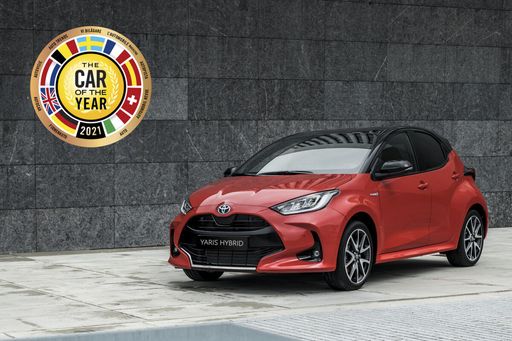 @ Toyota Motor Corporation
@ Toyota Motor Corporation
Toyota Yaris
Abarth 500 595 695
The Abarth 500, particularly in its 595 and 695 renditions, captures the spirit of Italian motoring with its compact yet aggressive design. Known for its lively performance and distinctive styling, this little powerhouse is a joy to drive, offering an engaging experience that appeals to enthusiasts. With its rich motorsport heritage, the Abarth 500 embodies the essence of fun and excitement on both the streets and the race track.
details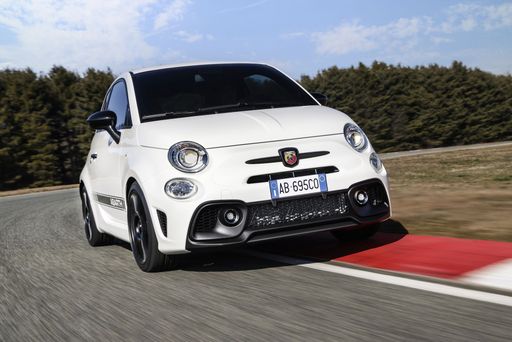 @ Abarth / Stellantis Media
@ Abarth / Stellantis Media
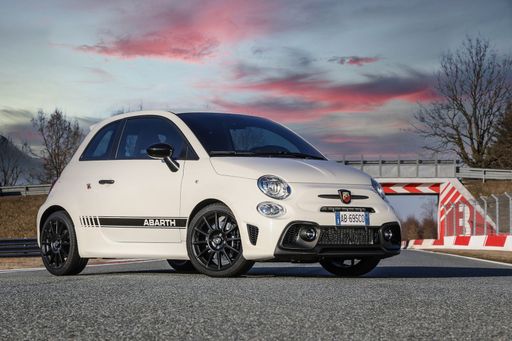 @ Abarth / Stellantis Media
@ Abarth / Stellantis Media
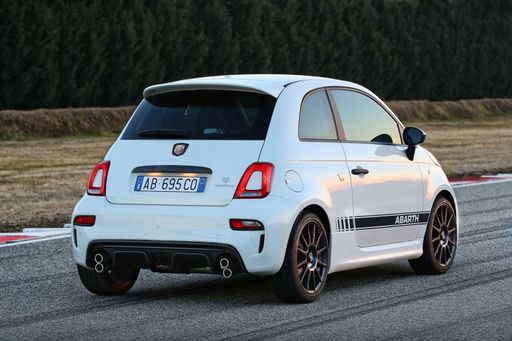 @ Abarth / Stellantis Media
@ Abarth / Stellantis Media
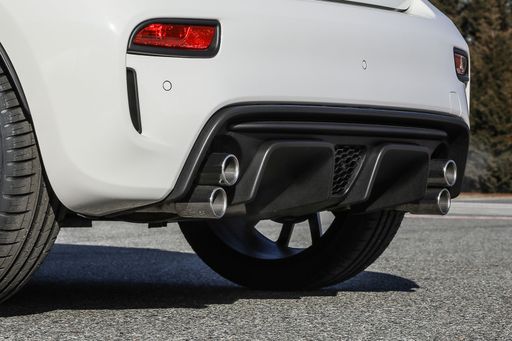 @ Abarth / Stellantis Media
@ Abarth / Stellantis Media
 @ Abarth / Stellantis Media
@ Abarth / Stellantis Media
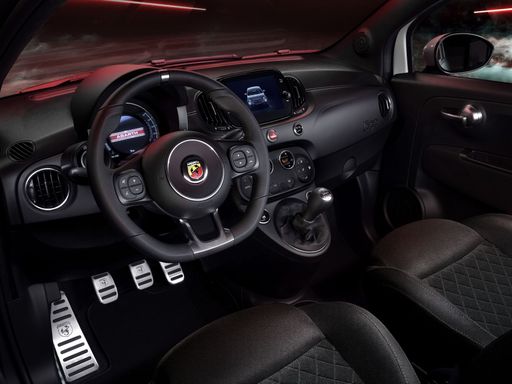 @ Abarth / Stellantis Media
@ Abarth / Stellantis Media
Toyota Yaris
The Toyota Yaris is a sprightly city hatch that packs clever packaging, surprising comfort and fuel-sipping manners into a neat, easy-to-park package. It rewards sensible buyers with low running costs, friendly ergonomics and a forgiving drive, delivered with Japanese reliability and just enough personality to make errands feel a little less ordinary.
details @ Toyota Motor Corporation
@ Toyota Motor Corporation
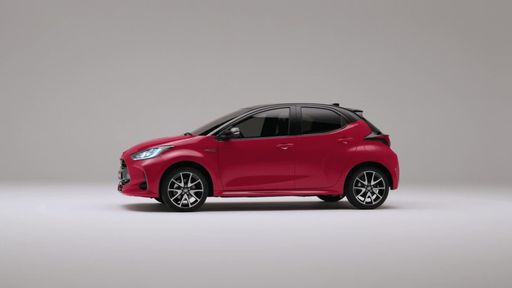 @ Toyota Motor Corporation
@ Toyota Motor Corporation
 @ Abarth / Stellantis Media
@ Abarth / Stellantis Media
|
 @ Toyota Motor Corporation
@ Toyota Motor Corporation
|
|
|
|
Costs and Consumption |
|
|---|---|
|
Price
32600 - 39400 £
|
Price
21900 - 46700 £
|
|
Consumption L/100km
-
|
Consumption L/100km
3.8 - 9.5 L
|
|
Consumption kWh/100km
17.1 - 18.8 kWh
|
Consumption kWh/100km
-
|
|
Electric Range
242 - 265 km
|
Electric Range
-
|
|
Battery Capacity
37.80 kWh
|
Battery Capacity
-
|
|
co2
0 g/km
|
co2
87 - 215 g/km
|
|
Fuel tank capacity
-
|
Fuel tank capacity
36 - 50 L
|
Dimensions and Body |
|
|---|---|
|
Body Type
Hatchback
|
Body Type
Hatchback
|
|
Seats
4
|
Seats
4 - 5
|
|
Doors
3
|
Doors
3 - 5
|
|
Curb weight
1410 - 1435 kg
|
Curb weight
1090 - 1356 kg
|
|
Trunk capacity
185 L
|
Trunk capacity
141 - 286 L
|
|
Length
3673 mm
|
Length
3940 - 3995 mm
|
|
Width
1682 mm
|
Width
1745 - 1805 mm
|
|
Height
1518 mm
|
Height
1455 - 1500 mm
|
|
Max trunk capacity
550 L
|
Max trunk capacity
935 L
|
|
Payload
370 - 385 kg
|
Payload
289 - 525 kg
|
Engine and Performance |
|
|---|---|
|
Engine Type
Electric
|
Engine Type
Full Hybrid, Petrol
|
|
Transmission
Automatic
|
Transmission
Automatic, Manuel
|
|
Transmission Detail
-
|
Transmission Detail
CVT, Manual Gearbox, Automatic Gearbox
|
|
Drive Type
Front-Wheel Drive
|
Drive Type
Front-Wheel Drive, All-Wheel Drive
|
|
Power HP
155 HP
|
Power HP
116 - 280 HP
|
|
Acceleration 0-100km/h
7 s
|
Acceleration 0-100km/h
5.5 - 9.7 s
|
|
Max Speed
155 km/h
|
Max Speed
175 - 230 km/h
|
|
Torque
235 Nm
|
Torque
390 Nm
|
|
Number of Cylinders
-
|
Number of Cylinders
3
|
|
Power kW
114 kW
|
Power kW
85 - 206 kW
|
|
Engine capacity
-
|
Engine capacity
1490 - 1618 cm3
|
General |
|
|---|---|
|
Model Year
2023
|
Model Year
2024 - 2025
|
|
CO2 Efficiency Class
A
|
CO2 Efficiency Class
B, G
|
|
Brand
Abarth
|
Brand
Toyota
|
Is the Abarth 500 595 695 offered with different drivetrains?
The Abarth 500 595 695 is offered with Front-Wheel Drive.
The prices and data displayed are estimates based on German list prices and may vary by country. This information is not legally binding.
